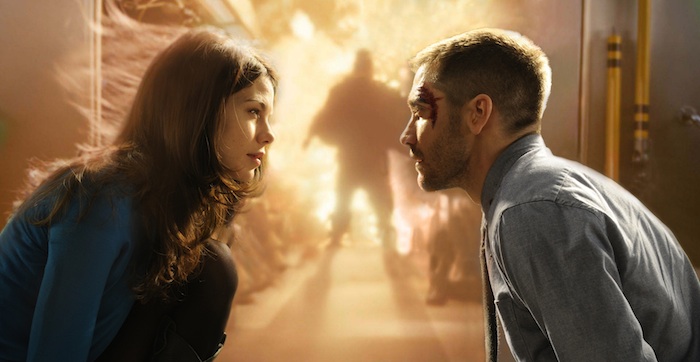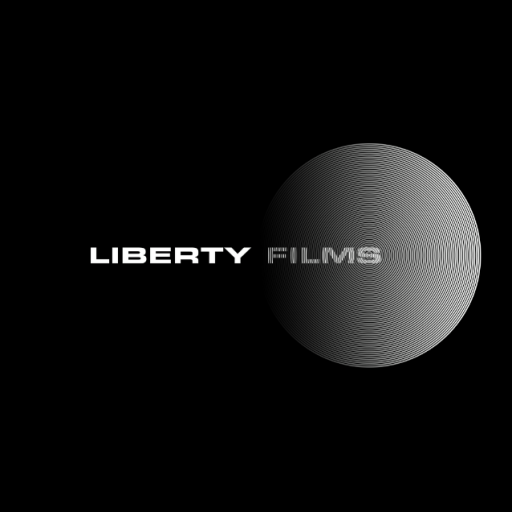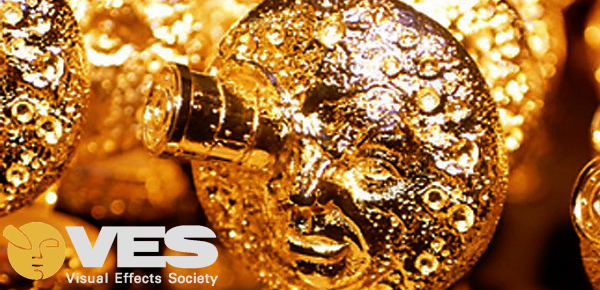Source Code visual effects supervisor Louis Morin and VFX producer Annie Godin have both been nominated in the category of Outstanding Supporting Visual Effects in a Feature Motion Picture for their work on Duncan Jones’ Source Code’…
The 10th annual Visual Effects Society Awards take place tomorrow night (7th February 2012) at the The Beverly Hilton Hotel, LA. Where Source Code is joined by top company in it’s category by:
[list_circle] [li]Anonymous[/li] [li]Hugo[/li] [li]Sherlock Holmes: A Game of Shadows[/li] [li]War Horse[/li] [/list_circle]

- Source Code – Jake Gyllenhaal & Michelle Monaghan
Press Release from Rodeo FX, Oblique FX, Fly Studio and Modus FX:
Montreal — When visual effects supervisor Louis Morin and VFX producer Annie Godin were nominated for a VES Award for their work on Duncan Jones’ Source Code, the Montreal-based facilities involved in the film had reason to celebrate as well. Under the guidance of Morin, the VFX facilities each took on different parts of the project, sharing assets and coordinating deliveries on the film. The result was both a visually stunning film and proof that the Montreal film industry can compete with the best on the world stage.
“Louis Morin is a very effective and creative VFX supervisor,” said director Duncan Jones. “He found really excellent boutique facilities that were able to craft individual, and very different kinds of effects that we needed in the movie.”
The four Montreal-area studios included Modus FX, who handled complex digital crowd shots, CG trains, environments and dramatic pyrotechnics; Rodeo FX, who crafted the crucial green screen windows for the train interiors; FLY Studio, who created the futuristic CG pod sequences and key transitions; and Oblique FX, who created the CG bomb, a virtual stuntman and a poetic slow-motion explosion sequence. Toronto-based Mr. X contributed to the green screen train window backgrounds and MPC Vancouver handled the exterior shots of explosions and a train crash sequence.
“In the grand scheme of things, this was not a big-budget film,” said Jones. “That meant we had to be fairly specific about the FX we wanted. We couldn’t play around with too many ideas. We really couldn’t afford to make mistakes.”
“We had 850 shots to manage and a budget of $3.5 million dollars,” said Morin, “and for most of the film you would have no idea that visual effects were even used. The train, the cabin interiors and the station all look like real. The goal was seamless visual effects where the audience is simply immersed in the story.”
The Source Code Story
Released in theaters on April 1, 2011, Source Code is a psychological sci-fi thriller that tells the story of a U.S. soldier, played by Jake Gyllenhaal, who wakes up in the body of another man on a Chicago commuter train. Shortly after that, the train blows up. As part of an experimental military mission, Gyllenhaal’s character is forced to repeat those final eight minutes on the train, working out how it was blown up, and, ultimately, how to prevent the tragedy. In the process, he forms a bond with a fellow passenger (Michelle Monaghan), and begins to solve the larger mystery of how he got there in the first place. While the film makes extensive use of visual effects, the digital achievements never overwhelm the essentially human story of Source Code.
All of the interiors were shot on a set in Montreal. Equipped with green screen windows, the whole set was placed on a gimbal that replicated the rocking movements of a train in motion. Exteriors used second-unit photography shot in Chicago. Commuter trains were digitally resurfaced, and a fictional train station was created using extensive digital set extensions.
“Some of the most subtle VFX work they had to do, like the insets for the green screen windows in the train, could make or break a movie like this,” explained Jones. “Even a small mistake with the simplest detail, like defining where the line of the landscape is, would have made a scene immediately and noticeably unrealistic. The guys did a beautiful job matching the moving patterns of Don Burgess’s ingenious lighting schemes, so it doesn’t pull the audience out of the movie.
Read more from the press release over at Animation World Network

